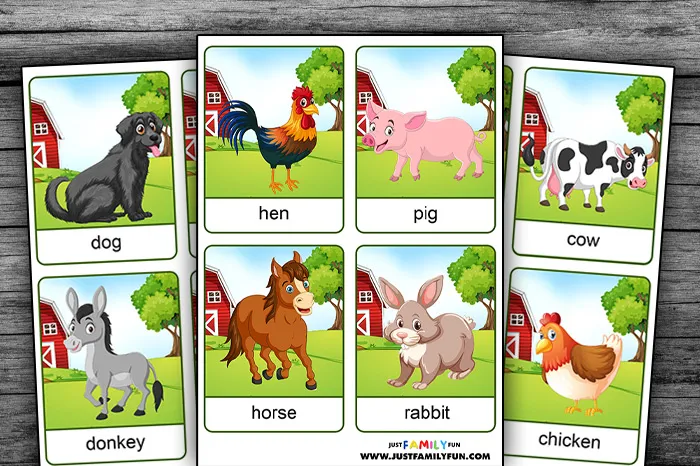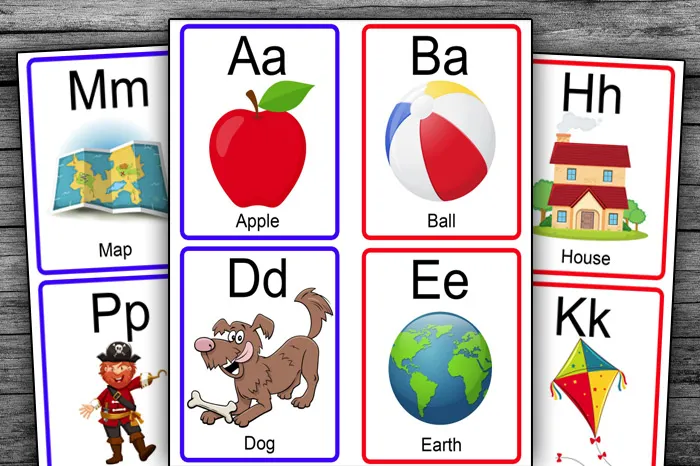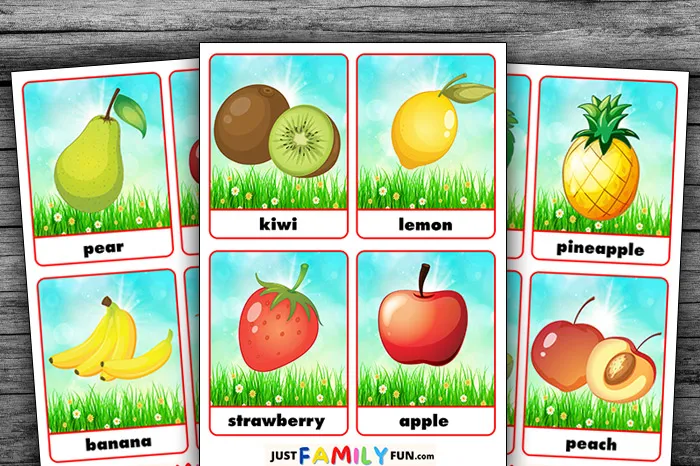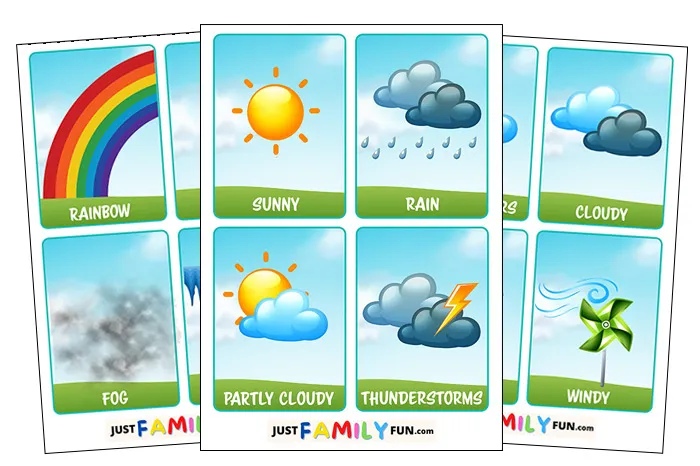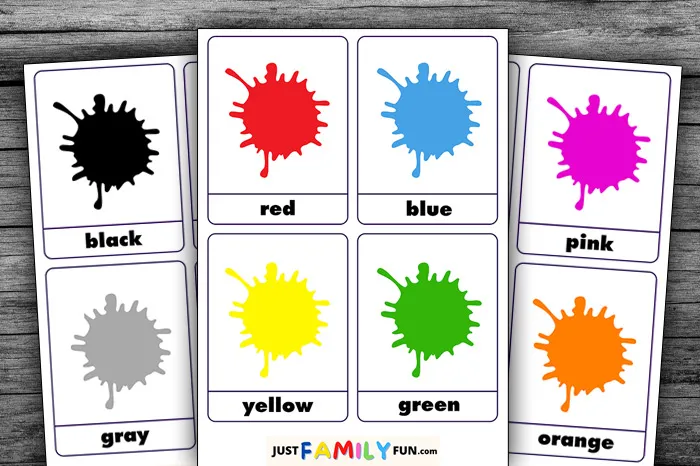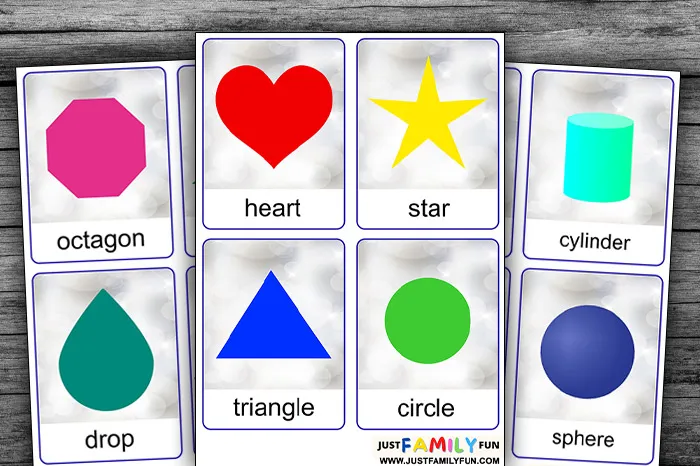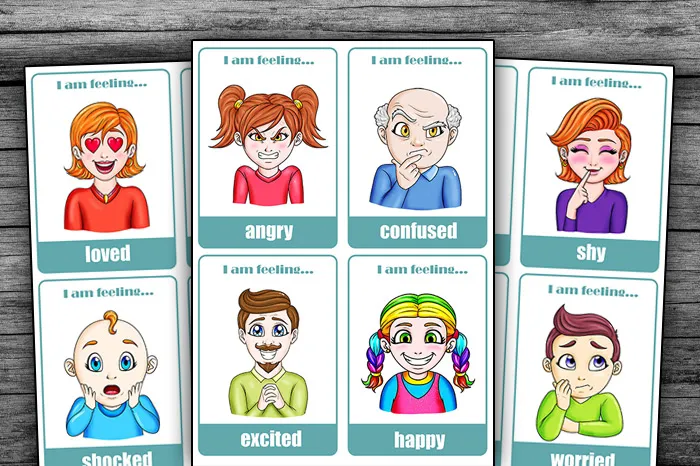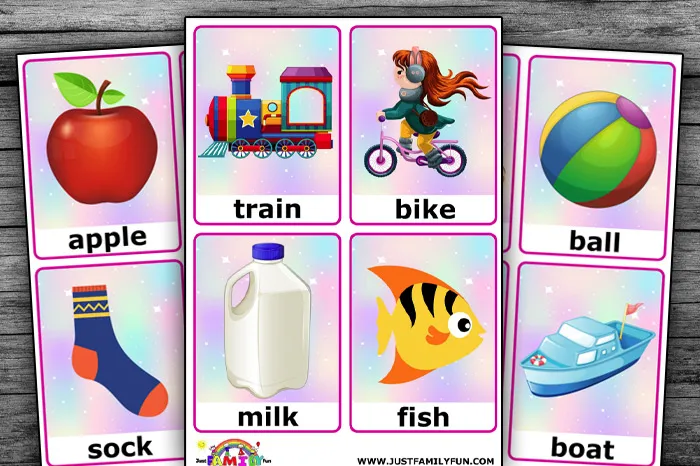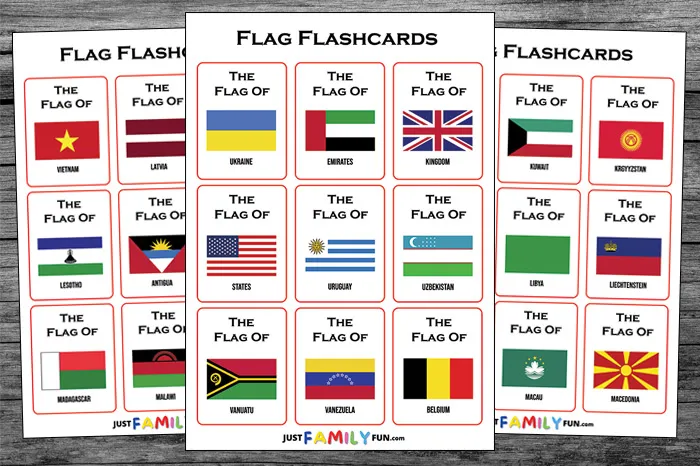Free Printable Flash Cards For Kindergarten & Preschool
We would like to introduce our delightful collection of printable flash cards for kindergarten and preschool ages. Bursting with vibrant visual cues, these flashcards are tailored for toddlers, preschoolers, kindergarteners, and youngsters honing their literacy skills in English.
Check out our diverse range of free, printable flashcard sets, including exciting themes like sea animals, colors, shapes, numbers, and much more. Dive into the world of marine life with our engaging sea animals flashcards, explore the spectrum of colors, discover various shapes, and introduce little ones to the magic of numbers.
Whether used independently or with a friend, these flashcards promise an interactive and educational experience. Be sure to explore the end of this article for creative tips on maximizing the impact of these captivating flashcards. Let the learning adventures unfold with our printable flashcards—making education both fun and enriching! 🌊🎨🔢✨

What’s Included in Our Flashcard for Kids Sets
Hey there! We’ve got a fantastic selection of flashcards for you, with over ten different themes to choose from. Whether you’re into zoo animals, colors, emotions, or national flags, we’ve got it all!
And the best part? You can download and print these flashcard sets for free, as many times as you need. Each standard A4 page gives you four large flashcards, all equally sized and ready for cutting. Want to save some paper? No problem! You can scale down the size on your printer.
To keep your flashcards in tip-top shape, we recommend laminating them. This way, they’ll stay sturdy and can withstand spills or tears. It’s a game-changer for making them reusable.
Here are a few tips to make the most of your flashcards:
1. Print in full color with high contrast for maximum impact.
2. Go single-sided so you can easily cut out the cards.
3. Use cardstock or thick paper to give your flashcards some extra durability.
4. Keep things organized by securing them with a keyring or binder clip.
Happy learning and just have fun with it! 😊🌈📚
The ocean is a large, vast, and biodiverse ecosystem. There are more creatures living under the sea than the guppies in your household fish tank! Our sea animal flashcards are perfect for introducing other marine organisms to your kids before your upcoming holiday or aquarium visit.
Included in our sea animal flashcard set are the clownfish, whale, dolphin, sea turtle, starfish, octopus, puffer fish, squid, shark, seahorse, crab, and jellyfish in a cartoon sea cave! The labels are easy to read for little ones learning to spell.
You can find more sea animal activities on our website, like this word search, to improve your child’s spelling and word recognition!
Whether you’re heading to the zoo, watching a wildlife program on the television, or have seen some of these animals in the wild before, it might be beneficial to learn about the twelve most common zoo animals with your children!
Included in this zoo animal flashcard set are labeled cartoon depictions of the zebra, monkey, tiger, elephant, giraffe, bear, snake, antelope, crocodile, turtle, lion, and leopard in a jungle habitat.
For another animal-related activity from Just Family Fun, open our animal face mask printable here. Wearing these masks will make learning about your zoo animals even more silly!
In the UK, you don’t have to drive far to find a farm full of noisy, smelly animals! You can help your children become familiar with the kinds of animals they’ll see and hear on a farm by using these flashcards together.
In this farm animal flashcard set, you’ll find a cartoon hen, pig, horse, rabbit, sheep, cow, cat, chicken, dog, duck, donkey, and goat in front of a big red barn with easy-to-read labels.
You can find more of Just Family Fun’s farm activities, including a printable scavenger hunt,here!
Alongside first-word flashcards, you can use our English alphabet cards to improve letter
recognition and pronunciation! Encourage strong, independent language skills by using these flashcards to kickstart your child’s speaking.
Our alphabet set contains one flashcard for each of the twenty-six English letters, shown in upper and lower case, with labeled cartoon images starting with the letter of the card.
If A is for apple, and B is for ball, what does C stand for?
For older learners attempting to improve their handwriting, we also have free Trace the Alphabet Worksheets here to use alongside our alphabet flashcards.
Sweet, colorful and healthy? Now that’s a great snack! Your kids will love learning about all the fruits they can try from the supermarket by using our free, printable flashcards. This is an easy way to introduce new vocabulary and healthy eating habits!
In our fruit flashcard set, you’ll find colorful cartoon depictions of the kiwi, lemon, strawberry, apple, pear, cherry, banana, watermelon, grape, pineapple, avocado, peach, plum, pumpkin, fig, blackberry, orange, raspberry, lime, and mango, all labeled.
Your children will be excited to taste and learn more about all of these delicious sweet treats. For more educational activities about healthy eating habits, visit our link here.
We experience weather every single day, from rain to shine. However, families in different
countries around the world may not have the chance to experience the variety of weather patterns and conditions they can learn about from our flashcards.
If your little one has never seen a rainbow or played in the snow, you can use our printable weather flashcards to teach about different weather conditions and weather observation, measurement, recording, and data interpretation!
Included in our weather flashcard set is a rainbow, tornado, fog, ice, rain showers, cloudy, snow, windy, sunny, rain, partly cloudy, and thunderstorms.
For older children, Just Family Fun offers a free printable weather chart to log the temperature and climate over a few days, weeks, or months! Print our chart here.
Colors play a large part in our perception and awareness of our surroundings. From light to dark and bright to dim, your child will be keen to learn about all the colors they see around them. The vocabulary in our color flashcards will help them express their emotions and experiences as they grow up and improve their speaking skills!
Each flashcard in this set shows a different color splotch with easy-to-read labels, including red, blue, yellow, green, purple, pink, brown, orange, black, white, gray, white, lime green, tan, beige, gold, silver, turquoise, indigo, lilac, and fuchsia.
For young kids, focusing on the colors of the rainbow can introduce a foundation for color
recognition and concepts such as green is a good, safe color and red meaning “stop”. Once your little ones have mastered the basics, help them decipher between shades of similar colors, such as pink and fuschia or tan and beige to improve critical thinking skills.
Everything around us takes the form of a shape; the candle on the hearth is a cylinder, the movie advert on tv is a rectangle, and the football in the garden is a sphere. To help your children
recognize these 2D shapes and 3D objects, we have made a set of labeled shape flashcards!
Our flashcards for kids include a heart, star, triangle, circle, diamond, square, rectangle, oval, pentagon, hexagon, crescent, cross, octagon, right triangle, drop, parallelogram, cube, cylinder, cone, and sphere.
The shapes and labels are easy to see on a dynamic gray background with adequate shading and sharp lines to help identify the 3D objects. Different styles of shape, such as straight lines, curved edges, and similar shapes with different numbers of edges can encourage attention to detail and reasoning skills.
Our shapes come in a variety of bright colors. If you’re looking to visually stimulate your baby or very young child, we recommend printing our shape flashcards in black and white to help them see better.
As a whole, our flashcard sets are used to help children express their experiences and thoughts. These flashcards help them recognize and express emotions themselves, which can be a difficult skill for children to grasp and feel confident with.
Particularly for children with ASD or another neurodivergent condition, our printable emotions flashcards are the perfect way to establish an understanding of facial expressions, tones, and the conveyance of feelings.
Our emotions flashcard set contains twelve cartoon portraits showing different, labeled emotions including tired, shy, upset, worried, angry, confused, excited, happy, loved, sad, shocked, and surprised. The pictured expressions are realistic but humorous to appeal to young learners.
Children are fans of talking – a lot – about everything they see, hear, and feel as they grow up and explore the world. To guide their babbling and help initiate meaningful conversations, you can use our flashcards to introduce everyday objects, animals, nature, and vehicles into your child’s vocabulary.
Our brightly colored first-word flashcard set is decorated with cartoon images of common,
easy-to-pronounce words, including train, bike, milk, fish, teddy, ball, car, boat, apple, banana, sock, shoes, book, bed, dog, cat, sun, tree, pig, and cow.
If your child is ready to start learning small numbers, needs extra support at home to reinforce what they’re learning at school, or, oppositely, needs an extension from their schoolwork, print and cut out our free number flashcards! These cards are an easy way to support your child’s development.
Each of our number flashcards shows a number in numerical form from 1 to 100 inclusively.
They are perfect for reading numbers aloud in word-form or creating basic arithmetic equations by, for example, selecting two flashcards from the set at random and adding, subtracting, multiplying, or dividing their values.
You can also print out our free Math: All About Me Using Numbers Worksheets here to use alongside our number flashcards.
*There are nine flashcards per A4 page in this set, unlike other sets with four.*
If your cup of tea is traveling, international cultures, and foreign foods, you can use our free and versatile flag flashcards to help teach your children about all of the world’s national flags! From simple stripes to intricate designs with multiple colors, recognizing the flags is an easy way to encourage inclusivity and a love for different cultures.
Our flag flashcard set contains 195 national flags with labels. For more geography-related activities from Just Family Fun, check out our other links:
How to Use Our Flashcards for Kids
Having flashcards is the first step. Next, you need to use them efficiently! Here are our recommendations on how to learn from and engage with your printed flashcard sets.
- Play a guessing game
Pick a flashcard out of your set and, without showing anybody else, look at the object it shows. Have your child ask questions to guess what the flashcard shows. For example: Is it an animal?
Is it pink?
Does it have feathers?
Does it fly?
Reversely, you can ask your child questions to guess the card they’re holding. This version might be more challenging!
- Play the memory game
Print and cut out multiple copies of the same flashcard set. To play, you must first lay all of the cards face-down on a table. For each turn, a player will flip over two cards they believe are a matching pair (ie two apples or two rainbows); if they don’t match, the cards are flipped back over and the next player starts their turn. If the flipped cards do match, the player removes them from the table and wins a point.
The memory game encourages critical thinking and focused attention to recall where each flashcard lies on the table so you can match pairs and win points. It will create a
familiarity with the vocabulary words they’re learning with you!
- Reading and spelling
Encourage your child to read and spell the flashcards’ vocabulary words aloud. This will improve pronunciation, literacy, and independence by way of guiding their own learning!
- Act it out
Have your child act out the flashcard. Use your creativity! For example, they could… Mimic the animal’s noise
Dress up for the type of weather Mirror the facial expression
Bend their body to make the shape Find clothes to wear in the color
- Play Card Run
Hide or place individual flashcards from your chosen set all around the house or garden. Ask your children to run and collect all of the cards as fast (and safely) as possible. When they bring a card back to you, ask questions about the information if conveys, such as:
How do you pronounce this word?
What would you wear in this weather?
What do you say to somebody who is feeling this emotion? Where would you find this animal?
What country does this flag represent?
If they can answer your question correctly, they earn a point and can run off to find another card. This is perfect for quick retention of knowledge and burning off some energy!
- Identification
While hiding the label, show your child the image on a flashcard and have them identify the relevant vocabulary word. For an extension, ask them to describe the word’s context.
For example, you could ask where the animal lives, what happened to make the person feel that way, what objects around your own house are that color, etc.
To hide the label, fold the bottom of the card over. If you’ve already laminated your flashcards, try covering it with your finger or scribble over the word in a dark-colored dry erase marker!
- Map it out
This activity is ideal for learners who are already familiar with their vocabulary words.
To play, print a large, blank world map and place flashcards over various corresponding countries/continents.
Describing weather patterns and national flags are best to do with younger children, but older ones can practice their research skills by finding out where to place native animals and fruits on the map too!
- Use your imagination
Allow your children to pick three flashcards at random and produce a story revolving around those elements – this can be oral or written, depending on the skills you want to target. You can guide their ideas by asking questions and encouraging them to think about characters and emotions.
For an extension, you can mix flashcards from different sets so your child must include multiple themes in their story.
Children have amazing imaginations that can be retained throughout their life by encouragement and support from the youngest age possible. This activity will inspire creativity and independent learning in them.
- Play “snap!”
Print two copies of your chosen flashcard set and divide the cut-out cards equally between two players. For each turn, one player will lay down a random card from their stack face-up for both to see. If the same card is laid down twice in a row, the two players must notice and shout “snap” first to claim the point.
To become familiar with your flashcard terms, instead of saying “snap” as you would in the original game, shout the vocabulary word on the flashcard which was just laid down twice. This will improve rapid thinking and knowledge surrounding the new vocabulary.
- Alternative communication tool
For children and adults of any age, verbal communication (speaking) is difficult, uncomfortable, or literally impossible. This is most common in people on the autistic spectrum (ASD) or with another neurodivergent condition. Alternative forms of communicating needs, wants, and emotions such as sign language exist to replace speaking. Our flashcards can function the same!
If your child struggles to voice their thoughts, our flashcards are an easy way to notify you of what snack they want, how they feel, or what colors they like best. Help familiarize them with the terms so he or she can show you a flashcard as their response.
- Recreate the flashcard images
Another creative way to inspire creativity in your children and encourage memory formation is remaking the images on the flashcards!
You can draw, color, or paint brand new designs on paper or, if your child needs to improve their dexterity skills, they could cut out old magazines, books, and paper to make a collage.
The best images to recreate are the national flags, animals, or facial expressions represented on each flashcard.
Our Study Tips
- Study little and often. Ideally, you should spend only five to ten minutes working with your flashcards to keep your child’s attention, rather than hours at a time. Revisit each set instead of moving on after a single learning session.
- Reduce distractions by turning off devices and putting toys away so your time using the flashcards is efficient and
- Praise your child’s effort and any correct answers! This is a form of positive reinforcement that will help your children learn and stay engaged in future flashcard sessions!
Conclusion
As your children grow, they will have first-hand experiences with all of the topics covered by our flashcard sets. From the colored clothes they wear and the language they speak to the weather they see and fruit they eat, we can help introduce these relevant and familiar vocabulary words.
We welcome you to print out our free flashcard sets as many times as you would like. Whether you play the flashcard games we recommend or use them as inspiration to make up your own, we’d love to hear from you! Send us photos of you using our flashcards for kids and share your story.



